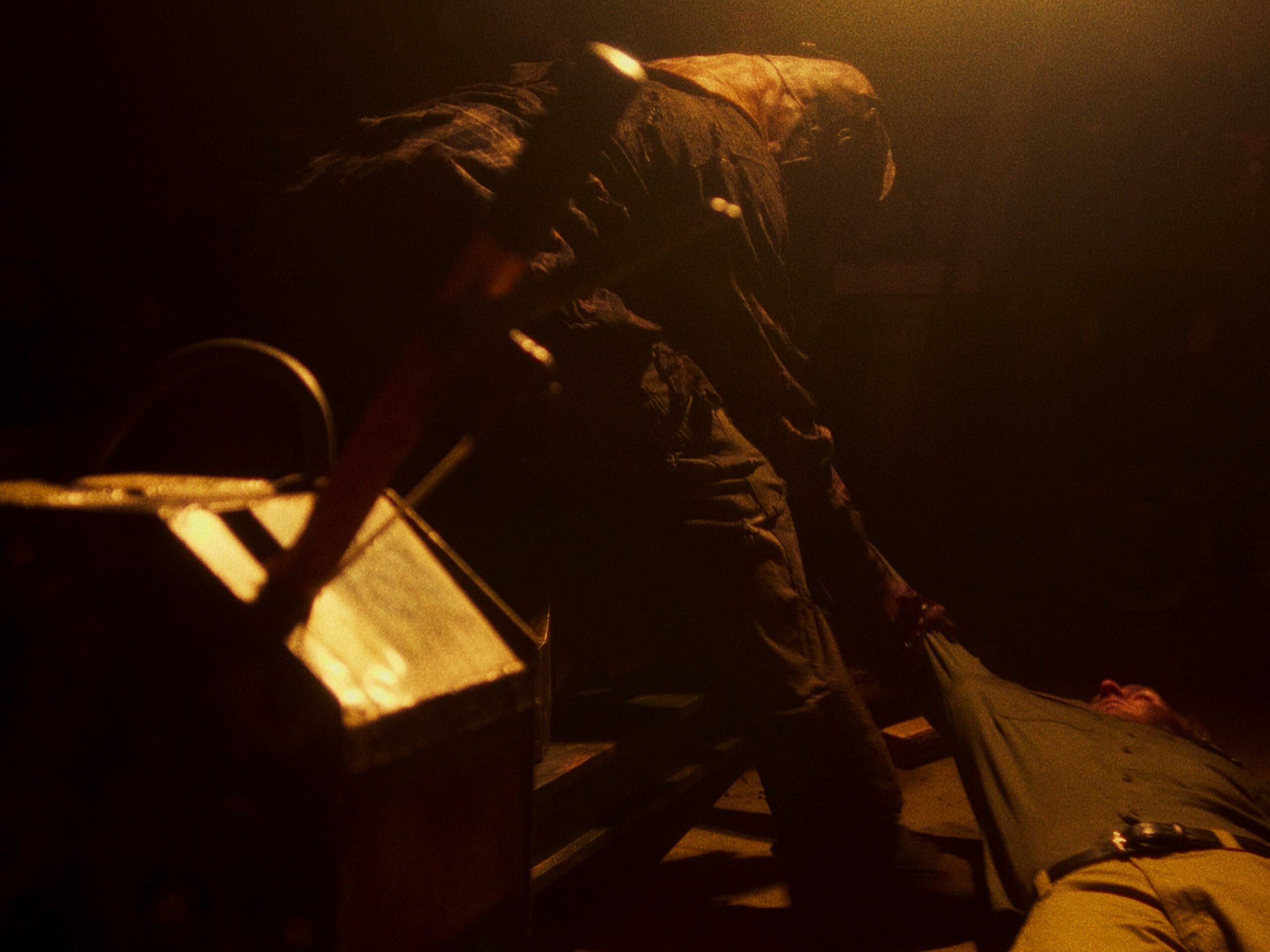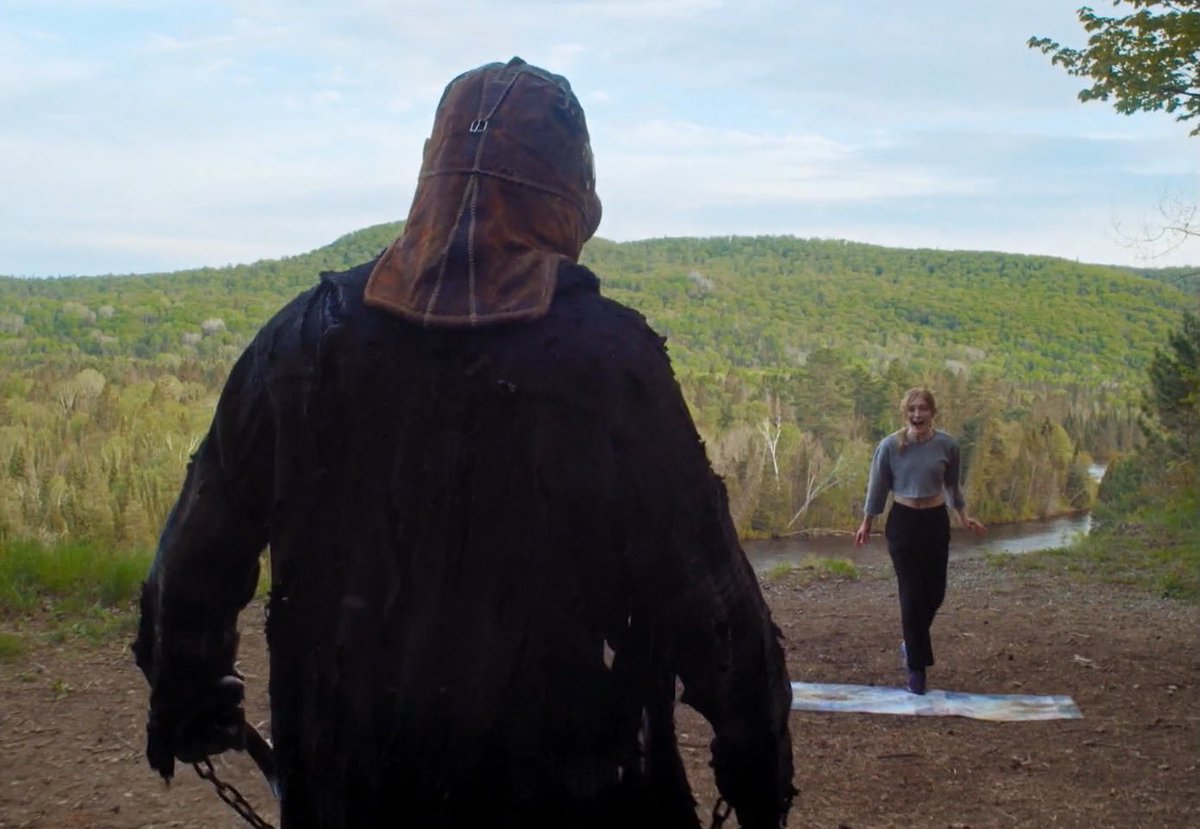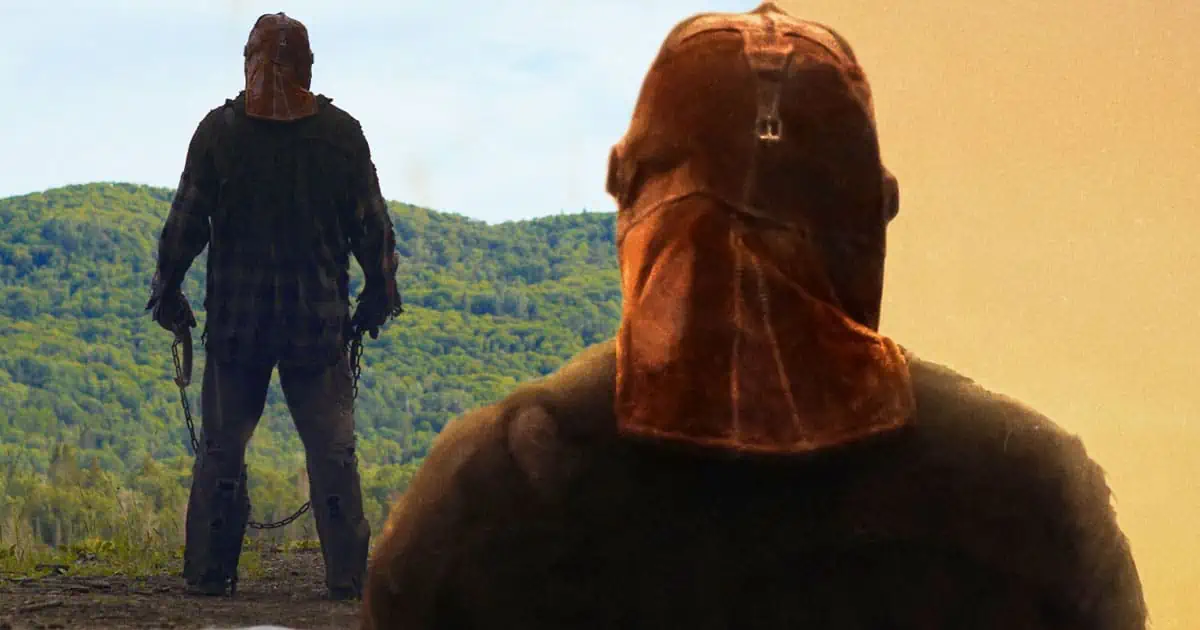After making a significant impact at the Sundance Film Festival’s Midnight section, Chris Nash’s latest slasher, “In a Violent Nature,” has quickly become a topic of fervent discussion among horror enthusiasts. Known for its unique portrayal of terror from the killer’s viewpoint, this film challenges traditional genre boundaries with its slow-paced yet profoundly unsettling narrative, highlighted by some remarkably intense kill scenes.

Exploring the Depths of Horror with Chris Nash
FandomWire: Your film strikes as one of the cruelest depictions I’ve seen, reminiscent of European extremist cinema. What drove the decision to portray death with such intensity?
Chris Nash: It’s interesting you say that because I don’t see it as particularly brutal. Coming from a prosthetic effects background, it’s all a technical game for me. The complexity increases with the brutality of the scenes. Working alongside Steve Kostanski, we push each other to pioneer effects that haven’t been seen before, which might contribute to that intensity.
The Unrated Journey: A Theatrical Gamble
“In a Violent Nature” is set to release unrated, a rare strategy for a film with such a broad theatrical release. Nash shared his views on the challenges and perks of bypassing the traditional MPAA rating system.
Nash: Honestly, there are no real benefits—just additional hurdles. However, for horror fans, the allure of an unrated film lies in the anticipation of witnessing the unprecedented, though I fear that might also breed a certain cynicism among viewers.
Society’s Macabre Fascination
During our conversation, Nash also touched on society’s grim fascination with violence—a theme deeply woven into the film’s narrative.
Nash: It could be an inherent curiosity about mortality, or maybe it’s the sinister comfort in the idea of a slasher’s resurrection suggesting that life doesn’t end with death. Additionally, the film provides a form of escapism where the impossible becomes possible, even if perilously so.

Crafting a Mysterious and Terrifying Antagonist
One of the film’s unique aspects is its treatment of the antagonist, Johnny, whose background is only partially revealed, allowing the audience to fill in the gaps.
Nash: I see Johnny more as a programmed entity rather than traditionally scary. This detachment might contribute to the unsettling aura around him. By letting the audience piece together his story, they insert part of themselves into the narrative, enhancing the horror through personal engagement.
Ry Barrett: Bringing Johnny to Life
Nash praised Ry Barrett’s portrayal of Johnny, emphasizing the physicality and emotional depth Barrett brought to the role.

Nash: Our preparation included detailed discussions and rehearsals focused on how Johnny moves and interacts with his environment. Barrett’s inspiration came from nature itself, observing how calmly predators like bears behave before they strike. This analogy perfectly encapsulated Johnny’s sudden bursts of violence.
A Memorable Scene of Terror
Discussing the film’s memorable scenes, Nash elaborated on the technical aspects of executing the infamous drag hook scene.
Nash: My approach involves visualizing the execution of effects during the writing phase itself, ensuring that every aspect is feasible. This scene was particularly challenging but rewarding, pushing the boundaries of what we could achieve with prosthetics and camera work.
In a Violent Nature: More Than Just a Horror Film
Scheduled for a theatrical release on May 31, “In a Violent Nature” promises to be more than just a collection of gruesome scenes—it’s a psychological journey that challenges viewers to confront their fears and question their understanding of violence and survival.

Chris Nash’s innovative direction, combined with groundbreaking prosthetic effects and a compelling performance by Ry Barrett, sets this film apart as a must-see in the horror genre this year.

